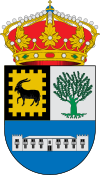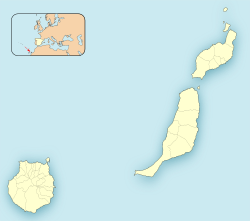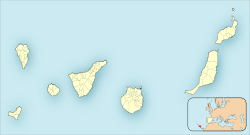La Oliva facts for kids
Quick facts for kids
La Oliva
|
|||
|---|---|---|---|
|
Municipality
|
|||
|
|||

Municipal location in Fuerteventura
|
|||
| Country | Spain | ||
| Autonomous Community | Canary Islands | ||
| Province | Las Palmas | ||
| Island | Fuerteventura | ||
| Area | |||
| • Total | 356.13 km2 (137.50 sq mi) | ||
| Population
(2018)
|
|||
| • Total | 25,884 | ||
| • Density | 72.6813/km2 (188.244/sq mi) | ||
La Oliva is a town and a municipality in the northern part of Fuerteventura. This island is one of the Canary Islands in Spain. A municipality is like a local government area.
In 2023, about 29,174 people lived in La Oliva. The area of the municipality is about 356 square kilometers. It even includes Lobos Island, which is a small island nearby.
La Oliva was founded around the year 1500. It was started by people connected to the Hernández brothers. For a while, La Oliva was the capital of Fuerteventura. This was from 1834 until 1860. Before that, Betancuria was the capital. After La Oliva, Puerto del Rosario became the new capital.
Contents
Exploring La Oliva and its Towns
The municipality of La Oliva has several important towns. Each town has its own unique features.
Corralejo: A Lively Port and Beach Resort
The biggest town in the La Oliva municipality is Corralejo. In 2023, about 14,318 people lived there. Corralejo is a busy port town. It is also a very popular beach resort. You can find it at the very northern tip of the island.
Other Important Towns
Besides Corralejo, other towns in the municipality are also important. These towns have different populations:
- Geafond: 3,985 people (2023)
- Villaverde: 2,118 people (2023)
- Lajares: 2,012 people (2023)
- El Cotillo: 1,474 people (2023)
The town of La Oliva itself had 1,720 residents in 2023.
Historical Significance of La Oliva
La Oliva has a rich history. It was once the home of the island's "Colonels." These were important military leaders.
The Casa de los Coroneles
The Colonels lived in a grand building called the Casa de los Coroneles. This historic house is in La Oliva. It shows the importance of the town in the past. It was the center of power for a long time.
Gallery
See also
 In Spanish: La Oliva para niños
In Spanish: La Oliva para niños












